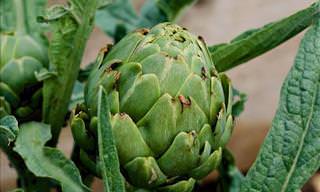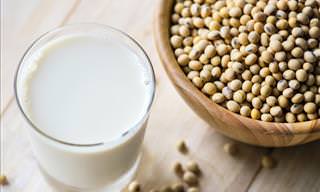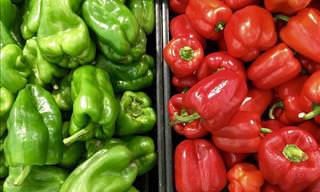The monotony of our daily culinary routines often prompts us to rely on a limited repertoire of vegetables like broccoli, spinach, lettuce, and carrots, repeating them week after week. However, by exploring some of the more uncommon veggies in the produce section of the grocery store, we can open ourselves up to a world of extraordinary possibilities and reap the rewards of both culinary and nutritional benefits.
Research suggests that incorporating a wider variety of vegetables into our diets not only helps reduce the risk of heart disease but also enhances our overall quality of life. With this in mind, we bring you a curated selection of unique vegetables from around the world, some of which may even be readily available in your own local area.
Related: 9 Vegetables That Are Healthier Cooked
1. Romanesco
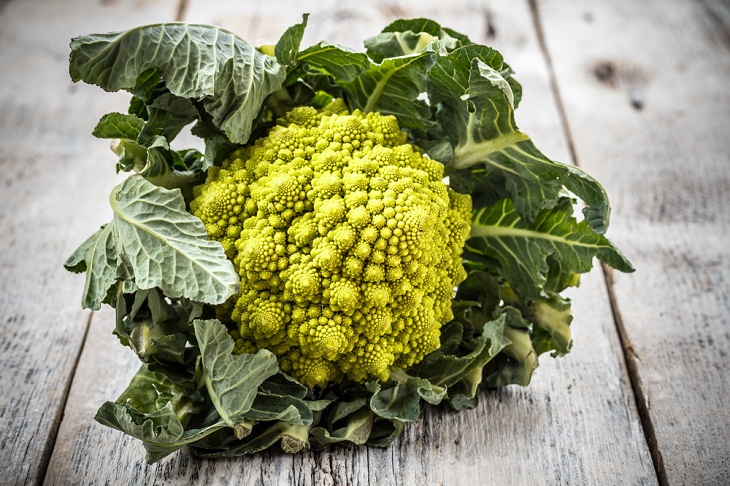
Belonging to the Brassica Oleracea family, which includes popular vegetables like cabbage, broccoli, cauliflower, kale, Brussels sprouts, and collard greens, Romanesco has a distinctive taste with hints of nuttiness and subtle sweetness. Its versatility allows for both raw and cooked consumption, opening doors to various culinary possibilities.
Research shows that brassica vegetables, including Romanesco, contain abundant polyphenol antioxidants and other valuable compounds. These components have been associated with potential anti-cancer properties and immune-enhancing effects.
2. Oca

This peculiar root vegetable, known as oca, bears a striking resemblance to ginger, white turmeric, and potato. Oca is known by several names, including uqa, cubio, and New Zealand yam.
In New Zealand, oca has gained popularity as a staple food and is enjoyed in various preparations. Similar to potatoes, it tastes best when roasted, cooked, or grilled. In addition to being rich in vitamin C (66% of the daily value), oca is also beneficial in fighting infections and stabilizing immunity. Furthermore, it contains a significant amount of iron (up to 70% of the daily value) that contributes to the improvement of hemoglobin levels.
3. Chayote

Chayote, a vibrant green squash with a wrinkled exterior, belongs to the same botanical family as pumpkins and zucchini. It boasts a tender, edible skin, and mild white flesh, which is commonly cooked but can also be enjoyed raw.
Despite its low-calorie content, chayote is abundant in important vitamins and minerals. A mere cup (132 grams) of raw chayote contains 25 calories while providing more than 30% of the daily recommended value (DV) for folate—an essential B vitamin crucial for DNA synthesis and cellular functioning.
4. Celeriac

While many of us are aware of celery, its lesser-known relative, celeriac, may not be as familiar. Also known as celery root, knob celery, or turnip-rooted celery, celeriac belongs to the root vegetable family. Unlike celery, which is primarily consumed for its stalks, celeriac is grown for its edible stems and shoots.
Hailing from the Mediterranean region, celeriac possesses robust flavors that resemble that of celery. This vegetable serves as a fantastic low-carb alternative to potatoes in soups and stews, while also offering the option of enjoying it raw. Celeriac also boasts a wealth of essential nutrients such as phosphorus, and potassium, as well as vitamins C and K, making it a valuable addition to a balanced diet.
Related: These Vegetables Will Keep You Full for Hours!
5. Nopal Cactus

Native to Mexico, the nopal cactus is a unique plant with edible paddles known as nopales. Beyond their culinary value, nopals offer exceptional nutritional benefits and are famous for their ability to regulate blood sugar levels, promote wound healing, and lower cholesterol.
Nopal is a Spanish word for a member of the Opuntia family of cacti. It is also commonly known as a prickly pear. The edible nopal pads can be enjoyed both cooked and raw. They are widely used in Mexican cuisine, finding their way into a variety of dishes including salads, soups, and stews. Additionally, they can be blended into refreshing smoothies for a unique twist.
6. Cassava

Cassava, also referred to as yuca or manioc, is a starchy root vegetable resembling a sweet potato in appearance but boasting a gentler and nuttier flavor.
Typically prepared through methods such as mashing, frying, or roasting, cassava requires cooking to lower its cyanogenic glycoside content, which has the potential to affect thyroid function.
Cassava is a staple food in developing countries and is rich in key nutrients such as vitamin C, various B vitamins, magnesium, potassium, manganese, and copper. Its drought-resistant nature further solidifies its significance in providing sustenance to communities in regions facing challenging environmental conditions.
Related: 10 Root Vegetables With Extraordinary Health Benefits
7. Purple Carrots
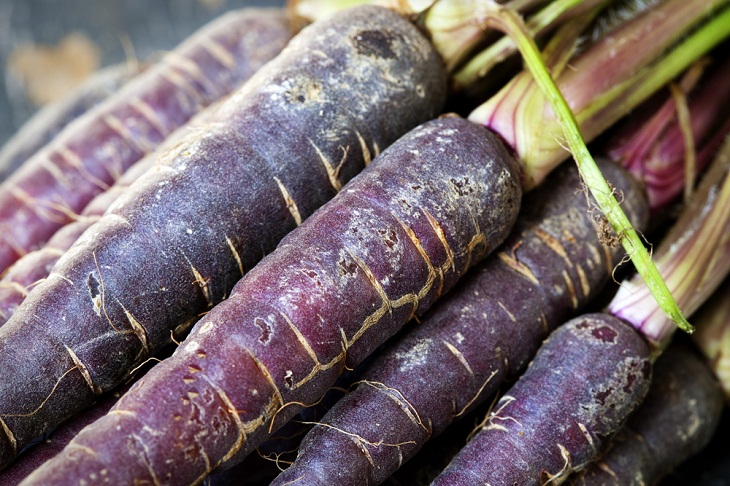
Although all types of carrots are highly nutritious, purple carrots are particularly rich in powerful antioxidants that can reduce inflammation in the body. They are packed with nutrients like fiber and potassium. Furthermore, similar to various other purple fruits and vegetables, these veggies have a formidable arsenal of antioxidants known as anthocyanins. These valuable compounds play a crucial role in safeguarding your body against oxidative stress, an imbalance that occurs when there is an excess of harmful reactive molecules known as free radicals and a deficiency of antioxidants within your system.
Similar to their conventional orange counterparts, purple carrots are versatile in their culinary applications. They can be enjoyed in various ways, including raw, cooked, baked, or even blended.
8. Rutabaga
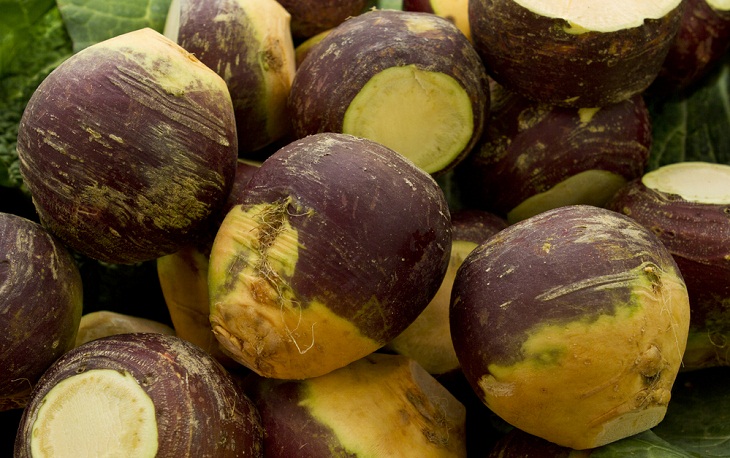
Rutabagas, recognized by various names such as swedes, snaggers, or neeps, belong to the cruciferous vegetable family alongside kale, cauliflower, and cabbage. These vegetables are thought to be a hybrid of turnips and cabbage and closely resemble turnips. However, they have a rougher skin texture and a slightly milder taste.
Rutabagas possess a low-calorie content while being rich in key nutrients like fiber, vitamin C, phosphorus, potassium, manganese, and magnesium. They can be enjoyed raw or cooked.
9. Jicama
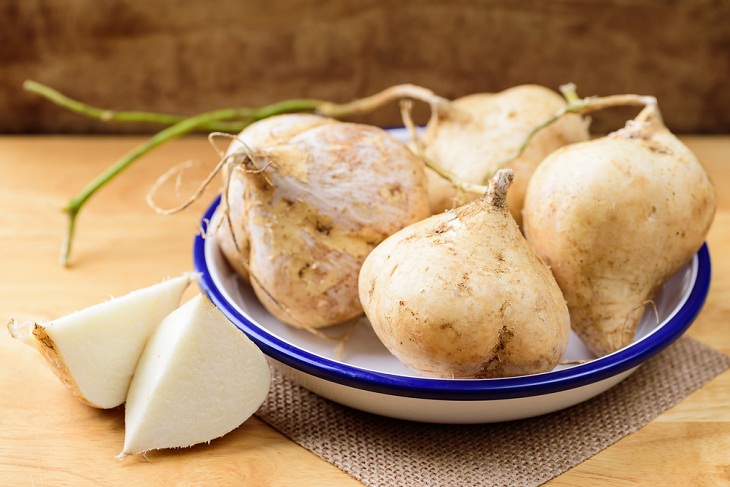
Jicama, a root vegetable predominantly cultivated in tropical regions worldwide, bears a striking resemblance to the familiar potato in terms of appearance and texture. Derived from the Pachyrhizus erosus vine, this edible root, shaped like a turnip, has a delicate white flesh with a mildly sweet taste.
Recognized by various names such as Mexican yam bean or Mexican turnip, this tuberous vegetable is chock-a-block with vitamin C. Furthermore, jicama is a fiber-rich gem, including the presence of inulin, a prebiotic that contributes to the well-being of your gut.
Jicama lends itself well to various culinary applications as its skin can be easily peeled using a basic vegetable peeler, and its flesh remains crisp and unblemished even after cutting. This makes it an excellent choice for enhancing salads and platters. To fully capture the freshness of this versatile vegetable, it is recommended to employ quick-cooking techniques when integrating it into dishes.
Related: How To Sneak Essential Fruit and Vegs Into Your Diet
10. Fiddleheads
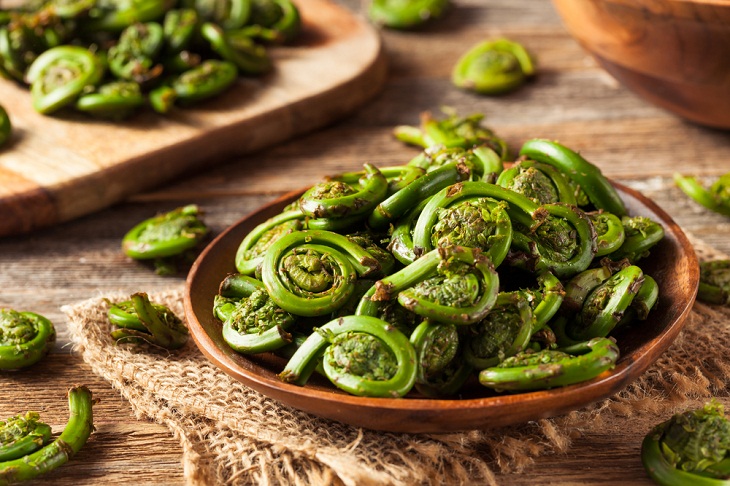
Fiddleheads, which are the curled fronds of the Fiddlehead fern, are highly sought after as a versatile vegetable. They offer a multitude of health benefits and are packed with an array of crucial nutrients and beneficial plant compounds like provitamin A, vitamin C, and manganese. The carotenoid pigments in these plants, such as lutein and beta carotene, have antioxidant and anti-inflammatory properties and may protect against various some cancers and eye diseases.
Fiddleheads can be easily integrated into stir-fries, soups, and pasta. it is advised to boil or steam them before employing any other cooking technique.
Their taste is similar to asparagus, but with a nuttier undertone.
 Go to BabaMail
Go to BabaMail












